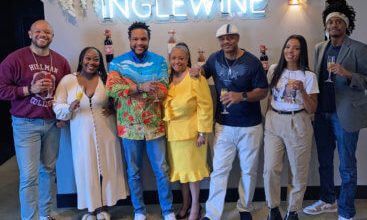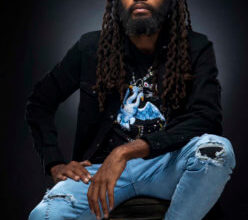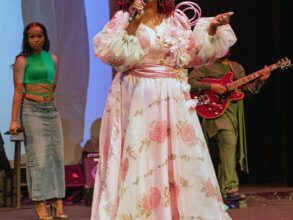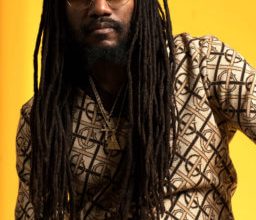Kool Yardie imports roots of jamrock to father hip-hop

Had it not been for an enterprising Jamaican immigrant named Clive “Kool Herc” Campbell the hip-hop genre might not be celebrating half a century.
Now known as the “father of rap” and the founder of the genre, Campbell revolutionized the music industry by adjusting the cultural practices he witnessed on his birth island to suit the sensibilities of audiences of his adopted homeland.
Born April 16, 1955 in Kingston, his earliest influence to music was a single broadcast medium — Radio Jamaica & Redifusion (RJR) a station which provided entertainment and popular music either imported, reworked or originally produced to local likings.
However, by the time Campbell reached the age of 12, there was a second music outlet called Jamaica Broadcasting Corporation (JBC).
In addition, often heard within numerous towns throughout the burgeoning Caribbean Metropolis, loud, blasting recordings emanated from sound-systems.
Constructed with oversized speakers they were built to project amplified sounds and alternative outlet to under-served communities willing to tolerate spontaneous, improvised versions of news from selectors.
Competition among selectors were inevitable.
A young Campbell who resided in Trench Town and Franklyn Town took note.
Too young to patronize the nearby dancehall, by the age of 12, Campbell’s musical appreciation had been fully infused when he and his family migrated to the USA.
Here at radio station WBLS-FM Frankie Crocker reigned as the premier personality to broadcast “first on the air anywhere” rhythm and blues and disco music recordings.
Again, Campbell took notes.
James Brown, the acclaimed godfather of soul was not only Soul Brother number one then but the dance master to emulate and a millionaire who regularly sold out the Apollo Theater with crowds queueing to watch him work.
As the chief radio rocker jammed from 107.5 FM providing extended play to Donna Summer’s “Love To You” disco single, in the Bronx Campbell compiled a catalogue of eclectic vinyl he hoped to ‘spin.’
The teenager invested in two turntables and practiced mixing songs for purposeful prolonged play.
A majority of migrant selectors chose to remain culturally-connected by catering to predominant Jamaican patrons who yearned for familiar sounds.
While many visited basement parties on weekends, clubs such as Mecca in the Bronx invited Caribbean nationals.
Campbell could have clung to early influencers from his homeland, afterall, U-Roy, Count Matchuki, King Stitt, Coxsone the Downbeat and others fascinated him but he was perceptive of his dominant new surroundings.
While living on the island, he had also heard of legendary sound-system operators such as Duke Reid the Trojan, Tom the Great Sebastian and others too he was determined to create his own brand.
Possessed by a strong affinity to music Campbell relied on the skill he honed from bearing witness to a culturally unique technique.
In Kingston, it was common stimulation that blasted the latest and often rejected radio-playlists. Selectors held court spinning amplified sounds in neighborhoods police ignored. And for free, roadside set ups could attract crowds of revelers.
There were also dancehalls – paid locations where top selectors perform to adoring patrons.
In the Bronx where he resided in a Mitchell-Llama housing development there was no such provision.
Instead, house parties invited polite guests.
And with the sale of alcohol beverages clubs demanded proof from teenagers for legal tender.
More common to immigrant teenagers, basement parties accommodated Jamaicans yearning for a taste of home. There, underneath homes furnished by proper working-class parents, a medley of ska, rocksteady, soul, merengue segued culturally compatible entertainment on weekends. Jamaicans in the east Bronx relied on Club Mecca.
A hot spot in Brooklyn rallied Jamaicans to a Crown Heights address between Crown and Carroll Streets where home-grown music was more than a novelty.
Every weekend the location called teenagers and immigrants of all ages from all boroughs to pay, enjoy curry goat and white rice, boiled dumplings and bananas and other delights available long before Red Stripe Beer started importing the brew.
Mostly it was the music that lured youngsters to mix and mingle. Most wanted to remain culturally connected.
Before Campbell became eligible to vote, he was convinced he could capitalize on his heritage. Along with his younger sister Cindy who devised a profitable money-earner to fund her back-to-school agenda, they combined talents to attract teenagers wanting to party.
Together they invited party-hearty customers.
Instead of playing a singular sound, the innovative deejay diversified his playbook to provide good-foot lyrics from the godfather of soul, funk from George Clinton and other recorders heard on radio stations such as KTU and WBLS.
Campbell took it up a notch by fusing the same sounds at intervals to elongate the tracks. Taking turns on each turntable he delivered extended versions of popular American funk, soul and disco using the same amplified, sound system technique he had been initiated in Jamaica.
Campbell’s integrationist style was different.
The 18-year-old became cool with a capital K.
Brawny and bold he was reputedly a fierce basketball player.
So much so he was nicknamed after Hercules, the Greek warrior whose strength, courage and intelligence made him an invincible force.
Kool Herc stuck as the moniker he adopted to coalesce with sons and daughters of Americans and off-springs of Caribbean natives.
Fifty years later, Kool Herc is the celebrated “father of rap” and his sister dubbed “the first lady.”
Together they have become part of the lexicon that defines the hip-hop music genre.
His invention earned him 1999 Source Magazine’s Pioneer Award.
Campbell has been featured in films, graffiti art, music and virtually at many major award shows.
Visionaries from Jamaica along with his savvy, sister Cindy, they capitalized on their heritage to promote what became a global phenomenon.
According to the pair, it all started at 1520 Sedgwick Ave. where they lived in the Bronx.
Together they hosted block parties and on Aug. 11, 1973 revolutionized an entire industry by capitalizing on skills they probably inherited from a heritage fraught with spontaneity and skills.
Africa Bambaata, Grandmaster Flash and others adopted the beats and rhymes that eventually birthed a movement.
Since then due to Campbell’s innovation, fellow Jamaicans have emerged to refine the genre.
From the parish of Mandeville in Jamaica, Dwight Arrington Myers migrated to put “money-making Mount Vernon” on the rap map.
Popularly known as Heavy D he defined Uptown Records and imprinted his own style as “the overweight lover.”
His cousin Peter Phillips is the renowned hip-hop/rap producer Pete Rock; Christopher Wallace aka Notorious BIG and Biggy Smalls became a symbol of East Coast gangsta rap. Last week a monument to the 2020 Rock and Roll Hall of Famer was unveiled in front of the Brooklyn Supreme Court.
He too transformed a record label by uniting with Sean “Puffy” Combs to form Bad Boy Records.
Trevor George Smith Jr, is better known by his moniker Busta Rhymes. Born in East Flatbush, Brooklyn, both his parents Geraldine and Trevor Smith Sr. hail from Jamaica.
Although the genre was dominated by males in 1985 along came a female, trio called Salt-N-Pepa. They became the first, female hip-hop group to be certified gold and platinum. Sandra Jacqueline Denton seasoned raps by adding Salt to the recipe. Born in Kingston, Jamaica, she was raised in Queens.
Of the acclaim Kool Herc said: “Because we are the ones who brought the style and technique to America, which became hip-hop” in the year of the 50th anniversary of hip-hop Jamaicans should be included.
He intends to establish a museum in Kingston to preserve the legacy rooted from the island.
“Well guess what/ I created something, so therefore I have a contribution myself and it would add to the Jamaican economy and tourism.”
Kool Herc will be inducted to the Rock and Roll Hall of Fame on Nov. 3 at the Barclay Center in Brooklyn.
The 68-year-old innovator will be the third Jamaican to be honored, after Bob Marley in 1994 and Jimmy Cliff in 2010.
Recently he was asked about the influence of the Jamaica sound-system and about the Aug. 10 FAWUUD conference at Webster Hall where he was honored during celebrations of the 50th anniversary of hip- hop.
“This event means much more than a collaboration. It feels like we are embarking on a historic movement for Jamaica, USA and the world. The intent of this collaboration clearly shows the Jamaican sound system culture influence. Hip-Hop’s 50th and FAAWUD gives me a sense of pride, and love, to be a part of a strong cultural celebration that is here to stay and keep evolving.
Herc told RocktheBells.com reporter Jacinta Howard “We have reached a big milestone celebrating the 50th Anniversary of hip hop culture,” the diverse attraction of old and young, white and Black audiences.
“As Jamaican’s say, “Out of One, Many People.”





